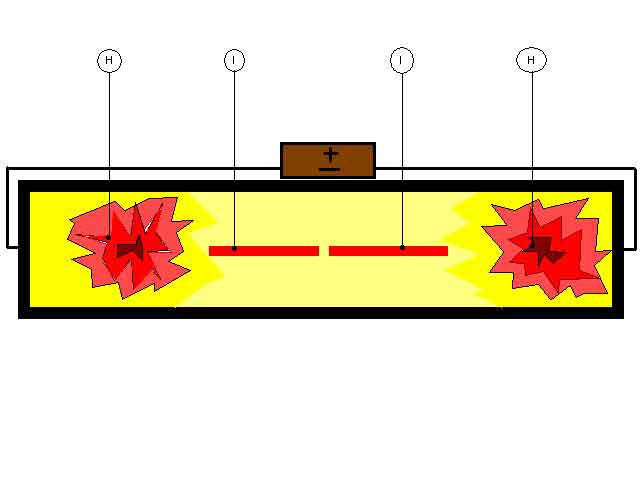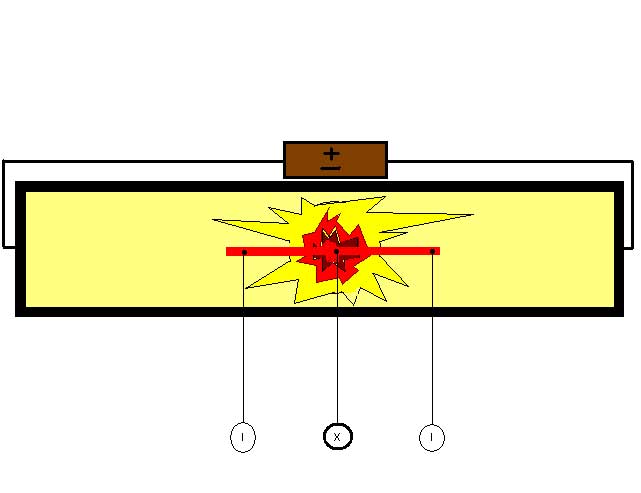PLASMA COLLIDER
Several ways are known to generate plasma ; here is a new one that I put under your considerations because of its novelty and possible uses.
Nearly everybody knows the hollow-charge principle that allows, given its configuration, to go through the strongest armour-plates.
To revert basically to its technique, it is an inverted cone-shaped explosive, applied at a distance from the object to be pierced.
The detonation of this so carved explosive leads to the occurrence in its inverted cone part of a "dard" of very high temperature and velocity, and its ability to overcome all kinds of armour-plates is the best illustration.. Sometimes this carved cone gets a covering made of various materials that vaporize or are self-forging, which makes it more efficient on the most recent armour-plates (the most commonly used are copper made).
We can compare over a certain distance this "dard" generated by the detonation and its covering with an energy ray, able to go through anything.
Speed and heat of this "dard" are nearing 10.000m/sec. and 5.000°(C); so, we better understand the way and ease it can go through the most sophisticated obstacles..
At the same time we can consider this "dard" as a steered energy focused on a certain distance with a huge power.
The question is whether it is possible to use this energy for other applications than the only armour-plates drilling.
Under some conditions, according to the cone covering and at the optimal focal distance, it would be worth while to study the collision of two "dards" facing each other as a result of the detonation of so positioned charges. .
Several kinds of "dards" can be produced according to their covering and shape.
The meeting point of these two similar energy beams could even lead to the partial fission or fusion of components of the "plasmatised" covering, provided that last is of fissile or fusible nature..
Studies about other materials can also be carried out in this way, by putting at the two "dards" focal point a target made of different materials to be studied..
In order to optimize the experiment efficiency the two charges must be put inside a high resistance container, and the distance between the two cones must be under advanced vacuum, so that to prevent the impact of materials from being affected by any interaction with an other environment.
In addition, the ignition of the two charges must occur at the same time to avoid an unbalanced collision process of the two "dards".
A - DETONATOR |
E - CONTAINER |
B - CHARGE HE ( explosive ) |
F - FIRING ELECTRIC CIRCUIT |
C - CONE (the cone covering is made of materials to be studied) |
G - ELECTRIC GENERATOR |
D - ADVANCED VACUUM |
 |
H - DETONATION (of the two charges at the same time) |
I - DARD (the two "dards" must reach the focal point at the same time) |
 |
| - I - DARD (the two "dards" must reach the focal point at the same time) | - X -
MEETING POINT OF DARDS (the two "dards" comprise materials to be studied)
|
 |
Bastita Bernard. 2006/04/06